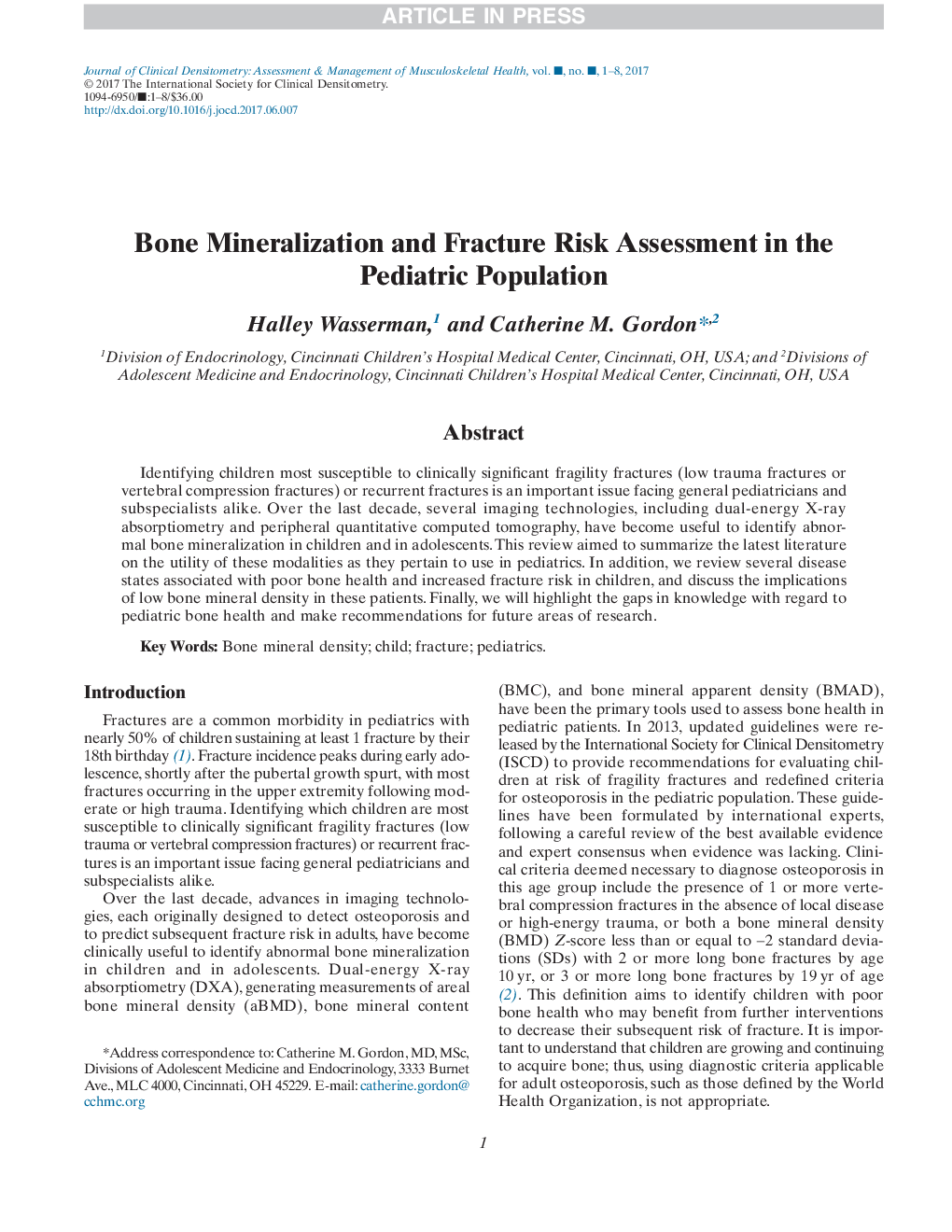| Article ID | Journal | Published Year | Pages | File Type |
|---|---|---|---|---|
| 8723071 | Journal of Clinical Densitometry | 2017 | 8 Pages |
Abstract
Identifying children most susceptible to clinically significant fragility fractures (low trauma fractures or vertebral compression fractures) or recurrent fractures is an important issue facing general pediatricians and subspecialists alike. Over the last decade, several imaging technologies, including dual-energy X-ray absorptiometry and peripheral quantitative computed tomography, have become useful to identify abnormal bone mineralization in children and in adolescents. This review aimed to summarize the latest literature on the utility of these modalities as they pertain to use in pediatrics. In addition, we review several disease states associated with poor bone health and increased fracture risk in children, and discuss the implications of low bone mineral density in these patients. Finally, we will highlight the gaps in knowledge with regard to pediatric bone health and make recommendations for future areas of research.
Related Topics
Health Sciences
Medicine and Dentistry
Endocrinology, Diabetes and Metabolism
Authors
Halley Wasserman, Catherine M. Gordon,
